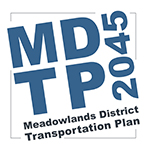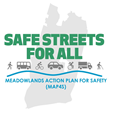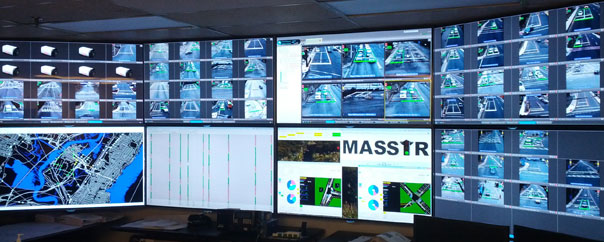The Hackensack Meadowlands District (District) is home to a wealth of natural resources as well as a vibrant and integral transportation network responsible for moving people and goods throughout one of the East Coast’s fastest-growing economic centers efficiently and safely. The District is located minutes from New York City and international transportation hubs such as Newark Liberty International Airport and the Port Newark/Elizabeth-Port Authority Marine Terminal. Local transportation infrastructure include the Frank R. Lautenberg Rail Station at Secaucus Junction, Teterboro Airport, Routes 3, 17, 46, and 120, the New Jersey Turnpike, and several park-and-ride facilities.
The NJSEA Transportation Group’s responsibilities are twofold: 1) Ensure that site plan review applications comply with the Meadowlands District Regulations regarding traffic and transportation; 2) Develop, update, and implement the District Transportation Plan as mandated by the Hackensack Meadowlands Transportation Planning Act. The group also has been diligently striving to secure grant funding to improve safety and mobility for all throughout the Meadowlands region. The award of federal grants for the Meadowlands Action Plan for Safety (MAP4S) and the Meadowlands Adaptive Signal System for Traffic Reduction (MASSTR) projects are testament to these efforts.
With a focus on advocating for multimodal mobility and safety, the NJSEA supports many initiatives, such as shuttle programs, which are now a part of EZ Ride, and a protected bike path along Meadowland Parkway, which was partially funded by NJSEA through its Transportation Planning District Fund.

MEADOWLANDS DISTRICT TRANSPORTATION PLAN (MDTP) OVERVIEW
The NJSEA Transportation Group and its consultants, with oversight of the MTPB, are undertaking the development of an updated District-wide transportation plan through a consultative planning process that relies upon the participation of the public and private sector interests. The updated Meadowlands District Transportation Plan (MDTP) will reflect recent growth in the District and renew the transportation planning horizon to the year 2045 (MDTP 2045).
If you have any comments or feedback, please contact us at MDTP2045@njsea.com.
MEADOWLANDS ACTION PLAN FOR SAFETY (MAP4S)

The Meadowlands Action Plan for Safety (MAP4S) is the first comprehensive safety action plan for the District, aimed at creating safer streets for all users. This federally funded project will develop a Safety Action Plan for the Hackensack Meadowlands District using a systematic approach to reduce fatalities and severe injuries. The plan will identify current and future transportation safety needs in the District, particularly those related to the impacts of heavy truck traffic on vulnerable users of the system.
MEADOWLANDS ADAPTIVE SIGNAL SYSTEM FOR TRAFFIC REDUCTION (MASSTR)

The NJSEA MASSTR Project reduces roadway congestion, delays, travel time, fuel consumption, and airborne emissions in the Meadowlands region through advanced, proven, and cost-effective technologies without sprawl-inducing roadway widening, significant infrastructure spending, or adding additional right-of-way.
The project incorporates 126 traffic signals into a self-adaptive network.
EZ RIDE
The Meadowlands Transportation Brokerage Corporation, the first Transportation Management Association (TMA) in the state of New Jersey, which operates under the brand name “EZ Ride” (formerly “Meadowlink”), is a non-profit organization established in 1983 as a public-private partnership, and has been sponsored by the NJSEA since its initiation. The main objective of EZ Ride is to reduce traffic congestion in northern New Jersey through the implementation of vehicle trip reduction measures, such as carpooling, vanpooling, shuttle programs, transportation for older adults and people with disabilities, bike and pedestrian programs, EZ Ryde4Life, and direct-link services to major employers in the service area.
EZ Ride Website
PEDESTRIANS AND CYCLISTS
With a focus on enhancing facilities for pedestrians and cyclists, the NJSEA, utilizing the Transportation Planning District Fund, reimbursed the Town of Secaucus for the construction of a designated protected bike path, which runs along Meadowland Parkway between Hudson Regional Hospital and the former home of WWOR TV 9. As part of the Secaucus Greenway, this bike path continues as a walking path to the south along Meadowland Parkway and connects to the Harmon Cove residential community.